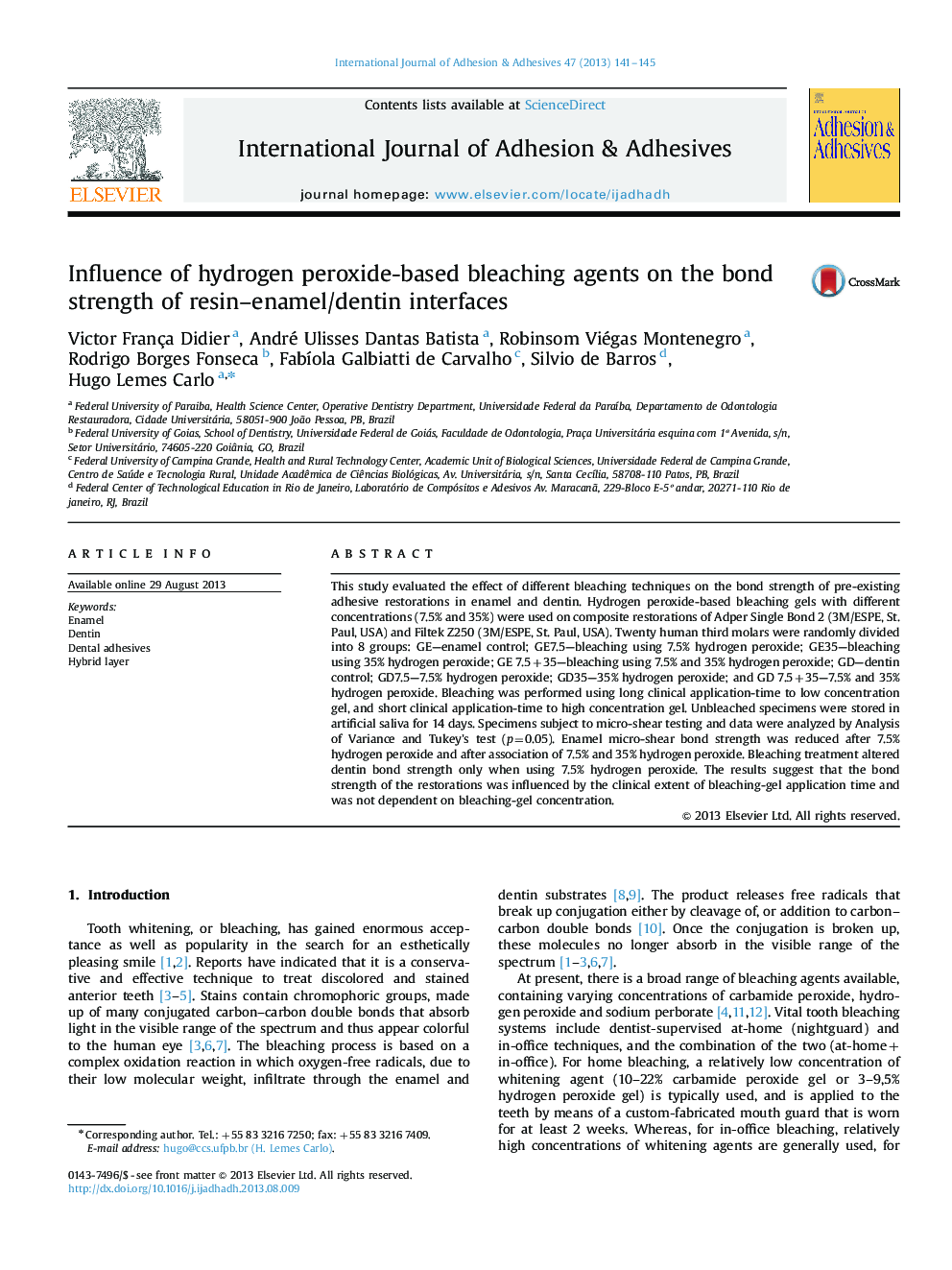| Article ID | Journal | Published Year | Pages | File Type |
|---|---|---|---|---|
| 776816 | International Journal of Adhesion and Adhesives | 2013 | 5 Pages |
This study evaluated the effect of different bleaching techniques on the bond strength of pre-existing adhesive restorations in enamel and dentin. Hydrogen peroxide-based bleaching gels with different concentrations (7.5% and 35%) were used on composite restorations of Adper Single Bond 2 (3M/ESPE, St. Paul, USA) and Filtek Z250 (3M/ESPE, St. Paul, USA). Twenty human third molars were randomly divided into 8 groups: GE—enamel control; GE7.5—bleaching using 7.5% hydrogen peroxide; GE35—bleaching using 35% hydrogen peroxide; GE 7.5+35—bleaching using 7.5% and 35% hydrogen peroxide; GD—dentin control; GD7.5—7.5% hydrogen peroxide; GD35—35% hydrogen peroxide; and GD 7.5+35—7.5% and 35% hydrogen peroxide. Bleaching was performed using long clinical application-time to low concentration gel, and short clinical application-time to high concentration gel. Unbleached specimens were stored in artificial saliva for 14 days. Specimens subject to micro-shear testing and data were analyzed by Analysis of Variance and Tukey's test (p=0.05). Enamel micro-shear bond strength was reduced after 7.5% hydrogen peroxide and after association of 7.5% and 35% hydrogen peroxide. Bleaching treatment altered dentin bond strength only when using 7.5% hydrogen peroxide. The results suggest that the bond strength of the restorations was influenced by the clinical extent of bleaching-gel application time and was not dependent on bleaching-gel concentration.
